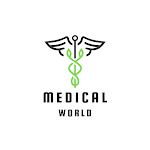. What is Circulatory system?
Blood vessels form the transport system of the body, the circulation is maintained by the central pumping organ called heart.
Components
1- Heart -it is a four chambered muscular organ which pump blood to various parts of the body. Each half of the heart has a receiving chamber called atrium,and a pumping chamber called ventricle.
2-Arteries - arteries carry oxygenated blood,away from the heart except pulmonary trunk and pulmonary arteries .
These are mostly situated in the body. These are thick -walled , highly muscular except arteries of cranium and vertebral column.
These posses narrow lumen and valves are absent and raddish in colour. These show spurty flow of blood giving pulse.
Types of arteries and structure
1- Large arteries of elastic type- e.g. Aorta and its main branches.
2- Medium and small arteries - e.g. ulnar , radial , femoral and popliteal etc.
3- Smallest arteries of muscular type- arterioles.
They measure 50-100 micron at their otigin and about 5 micron at their termination. The terminal narrow end of metaarteriole is surrounded by a precapillary sphincter which regulates blood flow into the capillary bed.
Microscopically, all arteries are made up of three coats .
a) the inner coat is called tunica intima
b) the middle coat is called tunica media
c) the outer coat is called tunica adventitia
Blood supply of Arteries- the large arteries are supplied with blood vessels. The nutrient vessels , called vasa vasorum , form a dense capillary network in the tunica adventitia and supply the adventitia and outer part of tunica media.
Nerve supply of arteries - The nerves supplying an artery are called nervi vascularis.
The nerves are mostly thinly myelinated sympathetic fibres which are vasoconstrictor in function. A few fibres are myelinated , and are believed to be sensory to the outer and inner coats of the arteries.
3- veins -veins are thin- walled, being thinner than the arteries. It carry Deoxygeneted blood , toward the heart except four pulmonary veins. These are superficial and deep in location.these posses wide lumen and valves are present which provide unidirectional flow of blood and it is bluish in colour.
Structure of Veins - it is made up of usual three coats which are found in the arteries. It pooly developed tunica media, the amount of collagen fibres is more than the elastic and muscle fibres.
It has three layers - tunica intima,tunica media and tunica adventitia .
Blood supply and nerve supply of veins- the larger vein, like the arteries are supplied with nutrient vessels called vesa vesorum. But in the veins, the vessels may penetrate up in the intima, probably because of the low venous pressure and low oxygen tension.
4- Capillaries - capillaries are network of microscopic endothelial tubes interposed between the arterioles and venules.
The average diameter of a capillary is 6-8 micron.
5- sinusoids - Sinusoids , replace capillaries in certain organs , like- liver,spleen,bone marrow, superrenal gland , perathyroid glands , carotid body etc.
6-Angiosome -it is 3D block of tissue supplied by an artery and vein. It is composed of skin, fascia ,muscle and bone.
Nerve supply-efferent autonomic fibres supply tunica adventitia.
7-Anastomosis - A precapillary communication between the arteries. It may be actual or potential .
a) In actual arteries anastomosis - the arteries meet end to end
b) In potential arteries anastomosis - the communication takes place between the terminal arterioles.
8- End Arteries - arteries which do not anastomosis with their neighbours are called End Arteries
Types of circulation of blood
Total amount of blood in adult is 4.5-5 litres.
a) .Systematic Circulation-the blood flows from the left ventricle, through various parts of the body, to the right atrium,
For example - they are from the left to the right side of the heart .
b) Pulmonary Circulation- the blood flows from the right ventricle, through the lungs , to the left atrium.
For example- they are from the right to left side of the heart.
c) Portal Circulation- it is a part of systematic circulation , which has the following characterstics.
1- the blood passes through two sets of capillaries before draining into a systematic vein.
2- The vein draining the first capillary network is known as portal vein which branches like artery to form the second set of capillaries or sinusoids.
For example - hepatic portal circulation, hypothalamo- hypophyseal portal circulation and renal portal circulation .


0 Comments